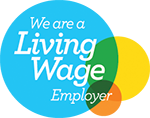
Posted by BECTU Communications on 6 March 2019
Voters who backed Leave in the 2016 referendum are sometimes surprised, belatedly, to learn that the EU workers in the UK that they were keen to "take control" of are significantly outnumbered by non-EU migrant workers, who have to apply for work permits through a rigorous, points-based, immigration system.
According to the latest figures, we have 2.3m EU workers, a number which is beginning to fall as some leave because of Brexit uncertainty, while there are 3.2m from the rest of the world, all of whom have to do much more than simply show a passport to take a UK job.
Those same voters may be even more surprised when they understand the government's plans for future migration rules, outlined in a White Paper published a few days before last Christmas. In the long-term, EU migrant workers will be treated exactly like everyone else through the points-based system, which is going to be relaxed to deal with the potential shortage of skilled workers when the existing non-EU restrictions are applied to them.
The crucial entry route for skilled labour is Tier 2 of the points-based system, and the new immigration plan makes several changes to its design. A current requirement to advertise most vacancies locally, unless they are on a shortage occupation list, before inviting a non-EU worker to do the job will be scrapped, as will the limit of 20,700 visas per year that can be issued. The skills threshold, which currently bars workers without the equivalent of a university first degree, will be dropped to A-level standard, and the minimum earnings level for migrant workers, currently around £30,000 a year, is to be reviewed, with a possible reduction in future.
Although the barriers to entry will be much lower once the new system is introduced, probably at the end of 2020, EU workers will face major costs if they pass all the points-based tests, including the visa application at £610, a Certificate of Sponsorship costing £199, the Healthcare Surcharge of £400 per year, and the Immigrant Skills Charge, which is £1,000 for the first year in a large employer, and £500 thereafter. EU workers will suddenly become more expensive than now.
On top of this, a new 12-month work visa is to be introduced for low-skilled workers from "low risk" countries, likely to be all EU members, plus selected territories like Australia, New Zealand, Canada, USA, Japan, and Korea. The visa offers very few rights, in terms of access to public services, or the ability to bring in dependants, but has no criteria attached, meaning no skills and earnings thresholds, and no cap to the number of these that can be issued. Once the 12 months have expired, the holder has to go home, but can apply again after a further 12 months, and the new visa, intended to deal with short-term shortages of unskilled labour, will be unavailable after 2025.
The new immigration system will not be ready in time for a no-deal Brexit on March 29th 2019, and until then EU citizens will be granted leave to enter, which allows work and study, for up to three months, or apply for European Temporary Leave to Remain, which will expire after 36 months.
A no-deal Brexit will cause widespread confusion over immigration rights, and the right of UK citizens to work within the EU. At least the British government has outlined its plans, and whatever happens, EU citizens resident in the UK on March 29th 2019 can apply for "settled status" if they have 5 years' of residence, or "pre-settled"status, which allows them to remain until they have satisfied the 5 year test. If a Withdrawal agreement is reached, new arrivals from the EU will also be able to apply for pre-settled status provided they become resident before the end of 2020, but a no-deal Brexit will close this option.
As for UK workers doing temporary assignments in a no-deal scenario, there exists a Shengen area visa for " Cultural, Sports, Religious Events, and Film Crews", which can be issued for a maximum of 90 days, and allows entry to 26 Shengen area countries. However, there will be assignments and circumstances where these visas do not apply, and intending workers will need to apply for work permits through the 26 different immigration systems of EU members except the Republic of Ireland, where the Common Travel Area will allow movement of workers.
With or without a Withdrawal Agreement (the "deal"), living and working around the EU is not going to be as easy as it has been since the Treaty of Maastricht in 1992.

Comments
Sorry, comments are not currently enabled for this post.

